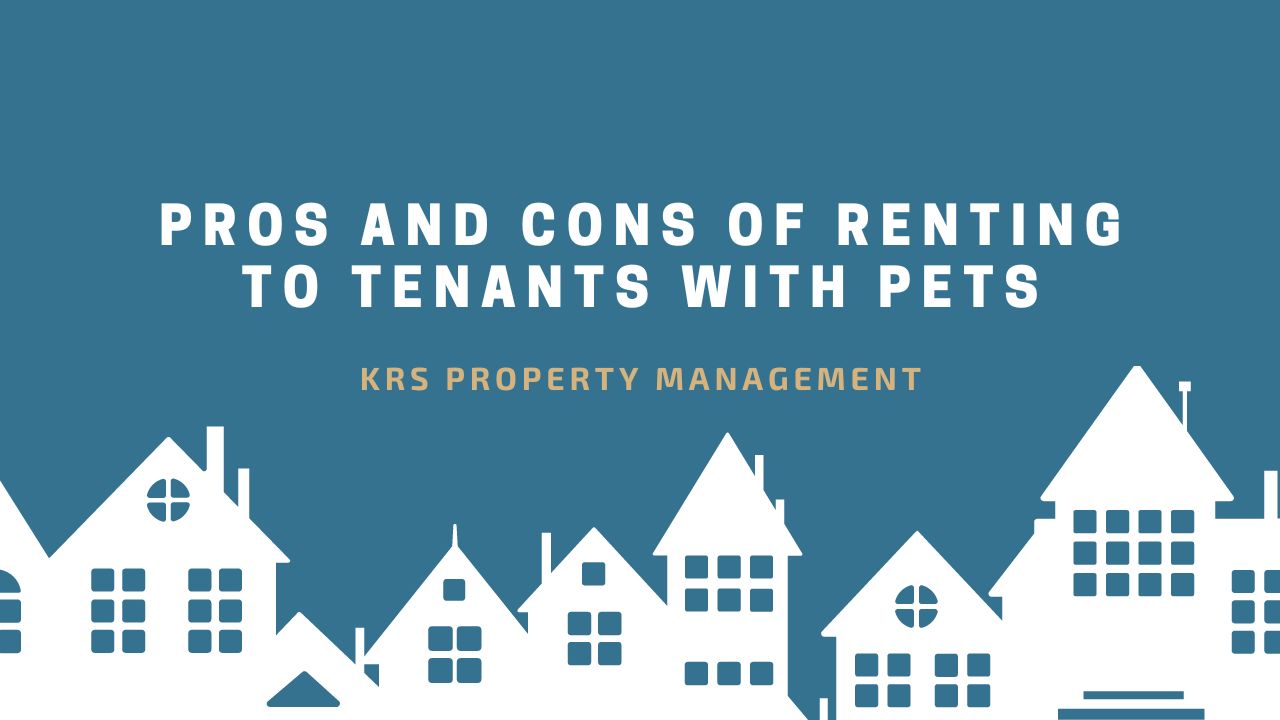
Pets bring joy, companionship, and unconditional love to our lives. They come in various forms, from dogs and cats to birds and reptiles. Pets can improve mental health, reduce stress, and encourage physical activity.
Their presence enhances our well-being, making life richer and more fulfilling. Many people think of their pets as family and look for rentals that allow pets. Accepting pets into your rental property can have a positive ROI. That said, accepting pets also has its fair share of risks. They can cause damage to the doors, walls, tear up the screens and blinds.
While there are both pros and cons of allowing pets, yours is to weigh the impact and determine whether it’s going to be worthwhile. To help you do that, here are the pros and cons of renting to tenants with pets.
Pros of Renting to Tenants with Pets
Advantages to allowing Pets in your rental property:
1. Pet Owners Usually Make More Money.
Caring for a pet isn’t easy; it requires compassion, understanding, and empathy. But beyond these things, caring for a pet also means having a good measure of disposable income.

Pet owners need to pay for things like food, personal grooming, pet insurance, dog walkers, sitters, toys and treats. According to one survey, the average annual cost of owning a dog is $376 a month or $4,512 a year. This is a considerable portion of a tenant’s disposable income every month!
Tenants who keep pets are, therefore, more likely to make more money than those who don’t. As a landlord, you can take advantage by earning more money through things like pet fees, pet deposits, or pet rent.
2. Pets Make Their Owners Happy.
Pets are great stress relievers. Allowing a tenant to keep a pet in your rental can help them feel happy and fulfilled.
And since not so many rentals accept pets, the tenant can end up living there for many months. Low tenant turnovers will mean a more stable, long-term income for you.
3. You Can Attract a Larger Pool of Prospective Tenants.
As already mentioned, not so many landlords accept pets into their rental properties. According to AmericanHumane.org, about 50% of the housing is pet-friendly. This means there could be up to 50% of landlords not allowing pets into their rental properties. This could be a huge opportunity for pet-friendly landlords.

By having more options, you’ll be able to attract a large pool of prospective tenants. You’ll be able to maximize your chances of landing a great tenant for your rental investment.
4. You Can Score Long-term Tenants.
Rent is the bread and butter of any rental investment. When your investment property is vacant, it means that your investment is making losses.
Luckily for you, by accepting pets, you can maximize your chances of landing long-term tenants. This is because finding pet-friendly rentals can be tough.
Cons of Renting to Tenants with Pets
Renting out to pet owners can also pose substantial risks. Fortunately for you, they can be managed by making the right contingency plans.
The following are some of the issues you may find yourself dealing with if you choose to accept pets into your rental.
1. There is a Risk of Property Damage.
There is increased property damage in rental investments accepting pets. The damage can occur in a few different ways, both noticeable and less obvious.
Dogs and puppies can chew and scratch on furniture legs, baseboards, door frames, and electrical cords. Excessive digging can wreak havoc on landscaping. Pet urine and feces can leave lingering odors and even permanent stains if not addressed promptly.
Birds can destroy your walls by pecking, and rabbits can chew on baseboards or furniture.
2. Pets Can Interfere With Other Resident’s Peace and Quiet.
Animals can make noises and cause a ruckus. Dogs bark, cats meow, rabbits thump their feet, and fish aquariums can be noisy if they have pumps or filters.
If you’re renting out an apartment, you may realize noise complaints are increasing from tenants living below.
3. Pets Can Cause Injuries.
Undisciplined, triggered, or threatened animals can injure people or other animals. Landlords can help mitigate this risk by screening pets before allowing them into their rental properties.

During the screening, make sure to do the following.
Ask for references from prior landlords.
Restrict certain breeds of animals.
Meet the pet and observe their interactions and temperament.
Require tenants to provide proof of completion of obedience training.
Require the tenant to pay a pet deposit.
What Contingency Plans Should Landlords Have When Accepting Pets?
The following are some of the things you’ll want to do to minimize the risks of allowing pets into your rental property.
1. Comply With Fair Housing Laws.
The Fair Housing Act requires landlords to treat tenants fairly based on the federal and state protected classes. Among the protected classes in Virginia is disability. This means that you must not refuse a service animal even if your property is not pet-friendly.
2. Have a Pet Policy.
Be clear and specific in your leasing contract when it comes to pets. Create a pet addendum that clearly states whether or not you accept pets on your property. You can also let tenants know that it’s a serious lease violation to allow unauthorized pets.
3. Charge a Pet Rent or Deposit.
A pet deposit can help protect you, against any potential damage the pet can cause to the property. A pet fee, on the other hand, is an additional cost on top of the regular rent.
Conclusion
You need to weigh all options when considering a pet-friendly rental. But while risks exist, you can overcome them by taking all the appropriate contingencies aforementioned.
For further help in property management matters, look no further than KRS Holdings. You can count on our reliability, performance, and responsiveness for all your property management needs.






